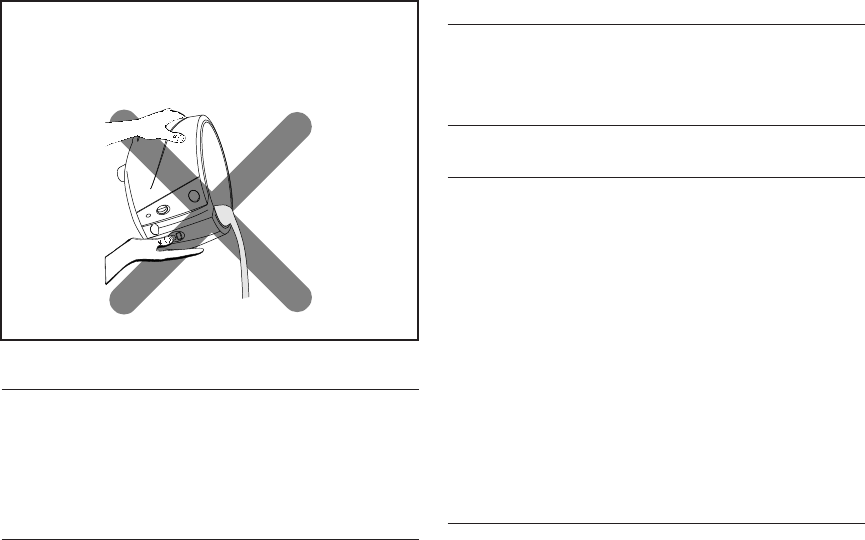
MAINTENANCE OF THE ANTI-ODOUR FILTER
Removable filter: over time, the anti-odour filter inside
the lid loses its efficiency. You are therefore recommen-
ded to replace it after every 10/15 frying sessions. To
replace, remove the plastic filter grille.
CLEANING
Before cleaning, always remove the plug from the elec-
trical socket.
Never immerse the deep fryer in water or hold it
under the tap. By getting inside the water would cause
short circuiting. Check that the oil is sufficiently cold
(wait about 2 hours), then empty out the oil or fat as
previously described in the paragraph headed “filtering
the oil or fat”.
Remove the lid as shown in fig. 13.
The lid is removable, to take it off, proceed as follows:
push the lid back (see arrow "1" fig. 13) and at the
same time, lift it up (see arrow "2" fig. 13).
Do not immerse the lid in water without having first
removed the filter.
To clean the boiler pan, proceed as follows:
• Wash the tank with hot water and washing up
liquid, then rinse and dry everything carefully. In the
models fitted with oil drainage pipe, always use it to
empty out the water (fig. 14); then remove any
remaining water which has collected in the oil drai-
nage pipe.
• In order to clean the inside of the drainage pipe,
use the pipe brush supplied (fig. 15).
• We advise regular cleaning of the basket, with care
being taken to eliminate any deposits which might
have accumulated in the basket’s wheel guide ring.
• Dry the outside of the deep fryer with a soft, damp
cloth in order to get rid of splashes and any little
dribbles of oil or condensation.
Model with non-stick boiler pan
To clean the boiler pan use a soft cloth with a neutral
detergent never using objects or abrasive detergents.
COOKING HINTS
HOW LONG THE OIL OR FAT LASTS
The oil or fat must never go below the minimum level.
From time to time it is necessary to renew it completely.
The length of time the oil or fat lasts depends on what is
fried. Breading, for example, dirties the oil more than
simple frying. As for all types of deep fryer, the oil dete-
riorates if it is reheated several times! Therefore, even if
it is used and filtered correctly, we recommend repla-
cing it completely fairly often. Since the deep fryer
works with little oil, due to its rotating basket, there is
the considerable advantage that you only have to get
rid of about half the amount of oil that you would with
the other deep fryers on the market.
HOW TO FRY CORRECTLY
• It is important to follow the recommended tempera-
ture for every recipe. If the temperature is too low,
the fried food absorbs oil. If the temperature is too
high a crust quickly forms on the outside while the
inside remains uncooked.
• The food which is to be fried must only be immer-
sed when the oil has reached the right temperatu-
re, i.e. when the signal lamp goes off.
• Do not overfill the basket. This would cause the tem-
perature of the oil to drop suddenly, resulting in
fried food which is too greasy and not uniformly
fried.
• When frying small quantities of food, the tempera-
ture of the oil must be set lower than the temperatu-
re indicated to avoid the oil boiling too violently.
• Check that the food is thinly sliced and of even
thickness, as food which is too thick cooks badly on
the inside, despite looking nice, while food of an
even thickness reaches the ideal cooking point all at
the same time.
• Dry the food completely before immersing it in the
oil or fat, as wet food becomes soggy after cooking
(especially potatoes). It is advisable to bread or
flour food which has a high water content (fish,
meat, vegetables), being careful to remove the
excess bread or flour before immersing it in the oil.
9
WARNING
Never empty the deep fryer by tilting it or turning
it upside down.


















